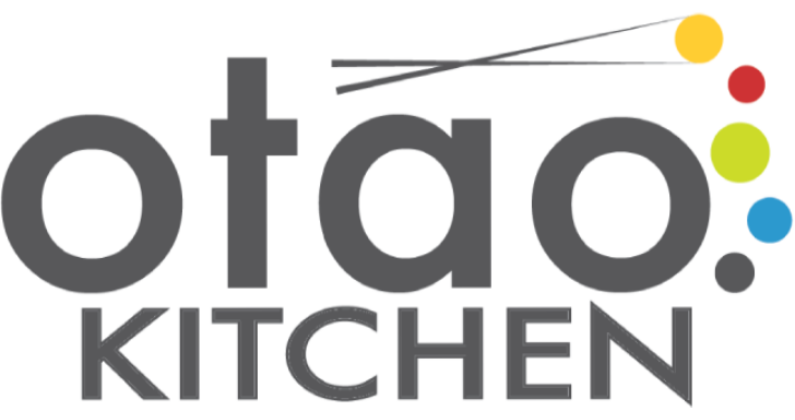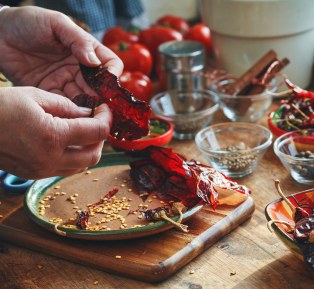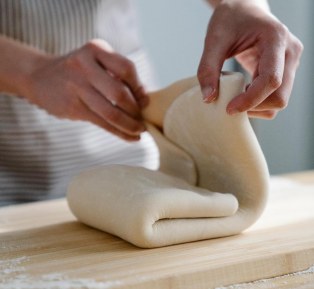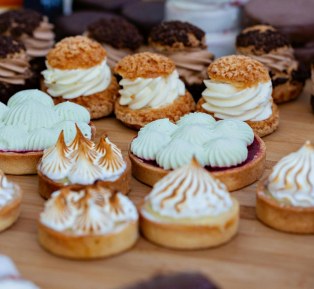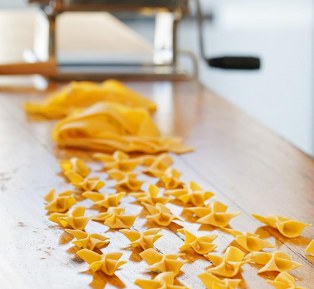
Culinary Inspiration by Otao Kitchen
Cook . Connect. Celebrate
At Otao Kitchen, we believe cooking is one of the most powerful ways to connect—with yourself, your loved ones, and the world around you. It can put a smile on your face, bring family and friends together, and create memories that last a lifetime.
But cooking is more than just connection—what you choose to cook and eat impacts your health and the health of the planet. That’s why we’re passionate about making it as easy and enjoyable as possible for everyone to experience the joy of good, home-cooked food.
“Cook to Connect” is at the core of everything we do. Through our blog, food experiences, and global travel inspiration, we explore the deep relationships between cuisine, culture, and community. From vibrant street food across the globe to time-honoured family recipes passed through generations, we share with you the stories, flavours, and traditions that shape the way the world eats.
Here, you’ll find:
Practical cooking tips and techniques
Authentic global recipes
Cultural and culinary insights
Event planning advice
Kid-friendly cooking inspiration
Travel stories and destination food guides
Seasonal celebrations and global food festivals
Whether you're in your home kitchen or exploring a faraway land, we’re here to help you cook with purpose—and connect with the world through food.
Asian Noodles: Your Ultimate Guide to Types, Storage, and Cooking Tips
Asian Noodles: Your Ultimate Guide to Types, Storage, and Cooking Tips
When it comes to Asian cuisine, noodles are an essential component—versatile, comforting, and deeply rooted in cultural traditions. But did you know the word “noodle” is a Western creation? In Chinese, they’re called miàn (or mein in Cantonese), which refers not to their shape, but the fact they’re made by mixing flour with water. That means dumplings and tortellini are technically miàn too!
The Malaysian word “mee” is also derived from this Chinese root. With so many noodle varieties across Asia, finding the right one can be confusing. But don’t worry—we’ve put together this essential guide to help you choose, store, and cook the perfect noodles for your next dish.
The Ultimate Guide to Rice: Types, Preparation, and Cooking Tips
The Ultimate Guide to Rice: Types, Preparation, and Cooking Tips
Rice is one of the most widely consumed grains in the world, forming the foundation of meals in nearly every Asian cuisine. From fluffy basmati to sticky glutinous rice, the type you choose and how you prepare it can make or break a dish. Whether you're attending a cooking class at Otao Kitchen or simply cooking at home, this guide will help you choose, wash, and cook rice perfectly every time.
Stir-Frying at Home: Your Ultimate Guide to Fast, Flavourful Meals
Stir-frying is one of the quickest and most satisfying ways to prepare a delicious, healthy meal. Originating in China over 1,500 years ago, this versatile cooking method has become a staple in home kitchens around the world. At its core, stir-frying is all about cooking bite-sized ingredients in a small amount of very hot oil while stirring constantly.
Whether you’re preparing a midweek dinner, using up leftover vegetables, or cooking for a crowd, stir-frying is a technique worth mastering. And the good news? You don’t need a commercial kitchen to get great results at home.
Why Stir-Fry? The Benefits
-
Fast: Most dishes take under 15 minutes once prep is done.
-
Healthy: Minimal oil, short cook times, and loads of vegetables.
-
Flexible: Great for using whatever you have in your fridge.
-
Flavourful: High heat seals in the juices and boosts umami-rich browning.
Chinese Pantry Essentials: What You Need to Cook Authentic Chinese Food at Home
Chinese Pantry Essentials: What You Need to Cook Authentic Chinese Food at Home
Stocking your pantry with the right ingredients is the first step to unlocking the bold flavours of Chinese cuisine. Whether you’re diving into stir fries, soups, dumplings, or braised dishes, having the right pantry staples makes all the difference.
At Otao Kitchen, we teach thousands of people each year how to cook authentic Chinese dishes. Here’s a breakdown of the essential ingredients we recommend to start your Chinese cooking journey at home.
The Food Of China - A Regional Journey Through Chinese Food Culture
A Regional Journey Through Chinese Food Culture
China’s Four Great Regional Cuisines
China's food culture is famously diverse, with four primary regional styles — Chuan (Sichuan), Lu (Shandong), Yue (Cantonese), and Huaiyang (Jiangsu) — representing the west, north, south and east of the country. These cuisines differ in flavour, technique, and ingredients, but all honour the traditional Chinese emphasis on colour, aroma, and taste.
China has 4 main regional food groups: Chuan, Lu, Yue and Huaiyang, representing west, north, south and east Chinese cuisines. Colour, smell and taste are the three traditional aspects used to describe Chinese food. In another way, Chinese chefs classify eight regional Chinese cuisines according to their distinct tastes and local specialties. Perhaps the best known and most influential cuisines of China are Cantonese, Shandong, Jiangsu and Sichuan. Many traditional regional foods also feature basic methods of preservation such as drying, salting, pickling and fermentation.
Chinese food has influenced many other cuisines, catering to local palates for many years. Food staples are rice, soy sauce, noodles, tea and tofu. Many day-to-day utensils such as chopsticks, woks and rice cookers can now be found in kitchens globally. China has many ethnic backgrounds which have their own preference for seasoning and cooking techniques.
For an even deeper classification, Chinese chefs recognise eight major cuisines, each shaped by geography, history, and climate. Among the most influential are:
-
Cantonese (Yue): Known for delicate techniques and fresh seafood.
-
Shandong (Lu): Salty, savoury dishes featuring wheat, soups, and seafood.
-
Jiangsu (Huaiyang): Elegant and balanced, with precise knife skills and stewing methods.
-
Sichuan (Chuan): Bold, spicy and aromatic, famous for Sichuan peppercorns and hotpot.
Many regional dishes also feature traditional preservation methods like drying, salting, pickling, and fermentation, ensuring ingredients were available year-round.
Want to cook your own regional Chinese feast? Join our Chinese Cooking Class in Melbourne »
A Hot Guide to Chillies in Australia: Types, Heat & Handling Tips
A Hot Guide to Chillies in Australia: Types, Heat & Handling Tips
Whether you're whipping up a spicy Thai salad, crafting a zingy salsa, or garnishing your favourite Vietnamese dish, chillies bring fire and flavour like no other ingredient. The heat comes from capsaicin, a natural compound that tricks your brain into thinking you're burning – even though you're not!
At Otao Kitchen, we love using chillies in our hands-on cooking classes, from Thai and Vietnamese to Mexican and Indian cuisines. Here’s your guide to the most popular chillies in Australia—fresh and dried—as well as tips for handling them safely.
How to Prevent Onion Tears
How to Prevent Onion Tears
No, you're not getting emotional—those tears are thanks to Propanethiol S-oxide, a gas released when onion enzymes are broken down. When this gas reaches your eyes, it forms a mild sulfuric acid that makes them sting and water.
Luckily, there are a few clever tricks to stop the sobbing:
How to Make Salad Dressings That Transform Your Meals
How to Make Salad Dressings That Transform Your Meals
Gone are the days of the sad, limp salad—those lonely bowls filled with pale lettuce, sharp onion, and hard, underripe tomatoes. Today, salads are vibrant, diverse, and satisfying enough to take centre stage at the dinner table. Whether you’re eating light, reducing food waste, or boosting your fruit and veg intake, salads are a colourful canvas for creativity—and the right salad dressing brings it all together.
Varieties Of Thai Curry Pastes
Thai food is popular all over the world, and the vast assortment of Thai curries are some of the most beloved. Usually served with steamed jasmine rice, yellow, green and red Thai curries can be cooked with all kinds of vegetables, meat or seafood. They’re so versatile that these pastes, made from fresh herbs, spices and aromatics can also be used to marinate, add to soups or give a flavour kick to noodles or rice dishes. The difference between each of these colourful curries may be confusing at first, but we’ll be running through their different core ingredients and flavour profiles to help you find your favourite!
You may also want to try
Public Cooking Masterclasses
3 hours
$197
Quick & Tasty Cooking Class
1.5 Hours
$109
Fold & Flow - MFWF
2 Hours
$157
The Confident Home Chef – Sauces, Fermentation & Pickling Workshop
1 Day (9-4pm)
$745
The Confident Home Chef – Bakery Specialties Workshop
1 Day (9-4pm)
$745
The Confident Home Chef – Pastry Specialties Workshop
2 Days (9-4pm)
$745
The Confident Home Chef – Vegetable & Plant-Based Cooking Workshop
1 Day (9-4pm)
$745
The Confident Home Chef – Seafood Mastery Workshop
24 Hours
$745
The Confident Home Chef – Poultry Essential Workshop
1 Day (9-4pm)
$745
